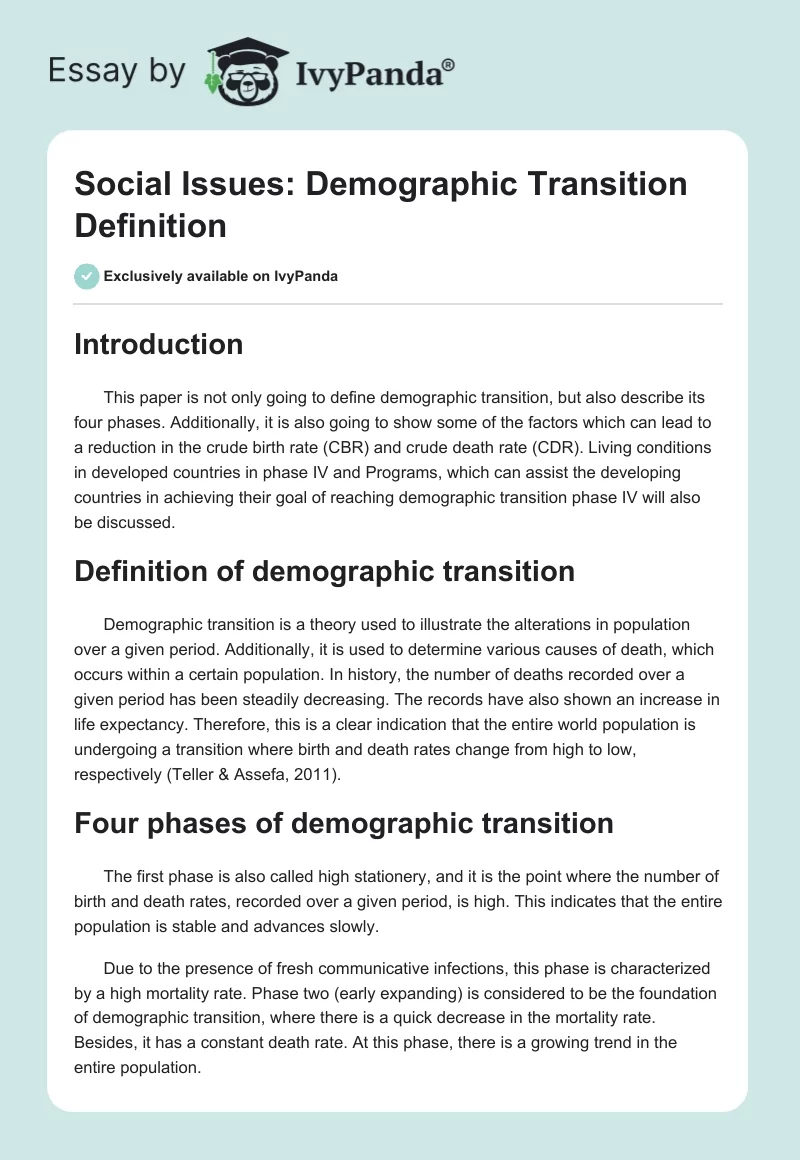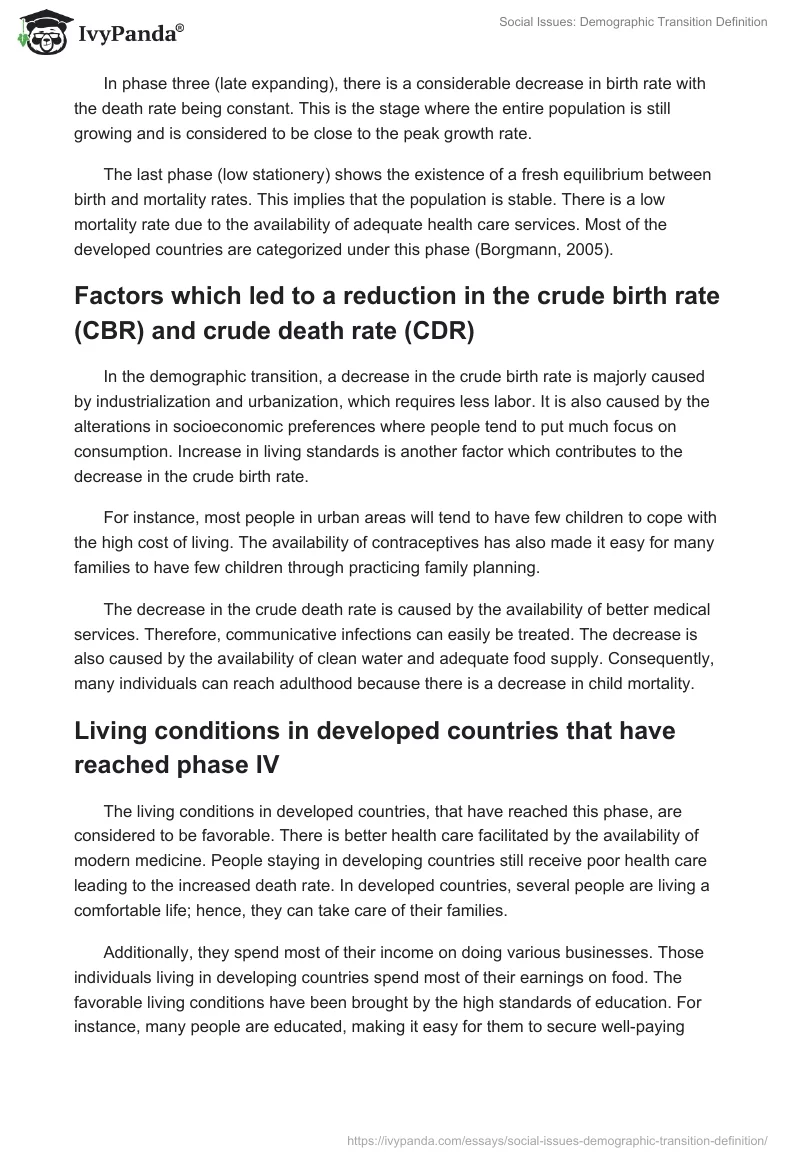Introduction
This paper is not only going to define demographic transition, but also describe its four phases. Additionally, it is also going to show some of the factors which can lead to a reduction in the crude birth rate (CBR) and crude death rate (CDR). Living conditions in developed countries in phase IV and Programs, which can assist the developing countries in achieving their goal of reaching demographic transition phase IV will also be discussed.
Definition of demographic transition
Demographic transition is a theory used to illustrate the alterations in population over a given period. Additionally, it is used to determine various causes of death, which occurs within a certain population. In history, the number of deaths recorded over a given period has been steadily decreasing. The records have also shown an increase in life expectancy. Therefore, this is a clear indication that the entire world population is undergoing a transition where birth and death rates change from high to low, respectively (Teller & Assefa, 2011).
Four phases of demographic transition
The first phase is also called high stationery, and it is the point where the number of birth and death rates, recorded over a given period, is high. This indicates that the entire population is stable and advances slowly.
Due to the presence of fresh communicative infections, this phase is characterized by a high mortality rate. Phase two (early expanding) is considered to be the foundation of demographic transition, where there is a quick decrease in the mortality rate. Besides, it has a constant death rate. At this phase, there is a growing trend in the entire population.
In phase three (late expanding), there is a considerable decrease in birth rate with the death rate being constant. This is the stage where the entire population is still growing and is considered to be close to the peak growth rate.
The last phase (low stationery) shows the existence of a fresh equilibrium between birth and mortality rates. This implies that the population is stable. There is a low mortality rate due to the availability of adequate health care services. Most of the developed countries are categorized under this phase (Borgmann, 2005).
Factors which led to a reduction in the crude birth rate (CBR) and crude death rate (CDR)
In the demographic transition, a decrease in the crude birth rate is majorly caused by industrialization and urbanization, which requires less labor. It is also caused by the alterations in socioeconomic preferences where people tend to put much focus on consumption. Increase in living standards is another factor which contributes to the decrease in the crude birth rate.
For instance, most people in urban areas will tend to have few children to cope with the high cost of living. The availability of contraceptives has also made it easy for many families to have few children through practicing family planning.
The decrease in the crude death rate is caused by the availability of better medical services. Therefore, communicative infections can easily be treated. The decrease is also caused by the availability of clean water and adequate food supply. Consequently, many individuals can reach adulthood because there is a decrease in child mortality.
Living conditions in developed countries that have reached phase IV
The living conditions in developed countries, that have reached this phase, are considered to be favorable. There is better health care facilitated by the availability of modern medicine. People staying in developing countries still receive poor health care leading to the increased death rate. In developed countries, several people are living a comfortable life; hence, they can take care of their families.
Additionally, they spend most of their income on doing various businesses. Those individuals living in developing countries spend most of their earnings on food. The favorable living conditions have been brought by the high standards of education. For instance, many people are educated, making it easy for them to secure well-paying jobs. In developing countries, most inhabitants are not able to finish school due to poverty. Therefore, they are not able to get well-paying jobs.
Programs or initiatives which can assist the developing countries in achieving their goal of reaching demographic transition phase IV
For the developing countries to achieve their goals of reaching phase IV, programs like the provision of better health care and reduction in the cost of living should be initiated. Better health care can be provided by employing qualified nurses and medical doctors. Besides, it can also be provided by the prescription of modern drugs to the patients. Moreover, by reducing the cost of living, many people will be able to stay in the urban centers and make their investments.
Conclusion
Demographic transition is used to illustrate the alterations of a certain population and has four phases. Each phase has its characteristics. Hence, different countries can be categorized under phases. Reduction in CBR and CDR has been greatly influenced by industrialization and urbanization.
Also, developed countries that have reached phase IV are considered to have favorable living conditions with better health care. Conclusively, for the developing countries to reach phase IV, several programs like better health care and reduction in the cost of living should be put into practice.
References
Borgmann, C. (2005). Social security, demographics, and risk. Berlin: Springer.
Teller, C., & Assefa, H. (2011). The demographic transition and development in Africa: The unique case of Ethiopia. Dordrecht: Springer.


